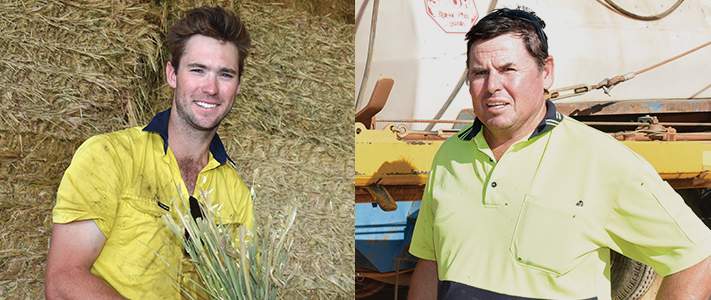Calculated moves for optimum results
About
-
Category
- Product News
-
Date
10 February, 2017
-
Location
WA
About
Category
- Product News
Date
10 February, 2017
Location
WA

Tom Smith, at Northam in Western Australia’s Avon Valley, firstly recalled the big change from the days of combines and full cut points, but he says his family is now a lot more con dent to sow early.
“These days, we are probably copying eastern wheatbelt mentality,’’ Tom says.
The family’s ‘Mount Joy’ farming properties received about 300 mm of steady summer rainfall this year. With a strong moisture profile, it meant they could seed canola on 5 mm of rainfall from early April, otherwise they were planning to stick with their traditional starting date of Anzac Day, with wheat sown in early May and export oaten hay in late May.
“We go late May with the oats because we want the hay ready to cut in early to mid-October, not in September when there is higher risk of rain,’’ Tom says.
“Going earlier with oats does produce massive hay crops, but you open yourself up to the weather.’’ If no further rainfall was received through to mid-April, the canola would have been sown deeper to chase the moisture.
Under similar circumstances with weed control, Tom says they would hold-off on the atrazine with canola. He says it would be a bit trickier with wheat, but they could still sow in early May and incorporate the pre-emergent herbicide, Sakura®.
“Pre-emergents with our wheat have provided good enough control, although wild oats could be an issue and barley grass is more of a concern in dry years.’’
With broadleaf weeds during the season, Tom says they always look to spray them as early as possible.
In WA’s eastern wheatbelt at Mollerin, Mark Sutton says modern equipment has meant stubbles are not burnt anymore at the family’s ‘Dyard Farms’ properties and they normally commence seeding from Anzac Day, sowing dry if necessary. Following summer rains this year however, he expected to commence in the second week of April.
“We have sown wheat in the past to chase the moisture – and in this case we would lift the sowing rate from 50 kg to 60 kg,’’ Mark says.
The traditional seasonal break in the area occurs from May 20. “We have a rule out here that we don’t continue seeding after June 10. In the last few years we have finished in the first week of June,’’ Mark says. “Our springs are getting shorter and we normally run out of moisture.’’
In terms of early weed control, he says if they are dry-sowing, they know paddocks need to be ‘clean’. “Out here, most of us then prefer to wait a bit for weeds during the season,’’ Mark says.
Keep informed and read more articles like this one by subscribing to Cultivate.



